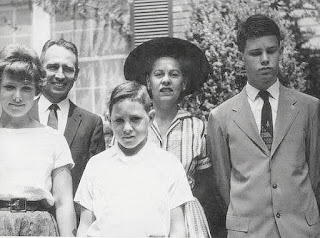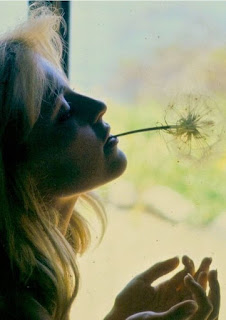Jim Morrison’s voice on the early Doors’ records is haunting. It conjures an earlier self and the need to achieve a spiritual autonomy above all else. This evolution was also reflected in Morrison’s writing, which became more concrete, and in his singing voice, which slowly degraded as the toll of his suicidal lifestyle began to show. “Blood in the streets it’s up to my ankles/Blood in the streets it’s up to my knee,” he sings on the 1970 “Peace Frog,” one of their best late songs. “Blood on the rise it’s following me.” The song, which shows off all the band members’ muscles, is tough to beat as a testament to late sixties dread. On the group’s last album, L.A. Woman, the blues orientation becomes most explicit, as does Morrison’s sense of isolation. Rock’s best long song, “L.A. Woman” has served as accompaniment for countless ecstatic road trips, but it’s more desolate than it sounds, while “Riders on the Storm,” though ostensibly about a serial killer, sounds almost hopeful by the end. The emotional core of “L.A. Woman” comes from its famous bridge, in which the last remnants of the Lizard King dissolve into Morrison’s final incarnation, Mr. Mojo Risin’.
In the Morrison mythology, his admiral father plays the part of the standard 1950s dad, too invested in his career and too repressed to understand his artistic son, whose middle name, Douglas, was for Douglas MacArthur. George S. Morrison’s life was every bit as eventful as his son’s. At 22, he was serving aboard the minelayer Pruitt in Pearl Harbor on December 7, 1941, when the Japanese attacked. He became the youngest admiral in the navy in 1966, just as the Doors were astounding audiences at the Whiskey a-Go Go on the Sunset Strip and preparing to record their first album. By then, the admiral and Jim had fallen out, polarized by years of mutual incomprehension and by the father’s harsh dismissal of the son’s career plans. When the Doors made it, Jim told reporters that his parents were dead. Though he had seemed on a career fast track, George S. Morrison never became a 4-star Admiral, and Doors drummer John Densmore believes that Jim’s notorious reputation was a key reason why. The navy, Densmore suggests, was reluctant to give the father of the Doors’ lead singer a higher profile. During Jim’s Miami obscenity trial, his defense team admitted a supportive letter from the admiral in which he vouched for his son’s good character while acknowledging that he had barely spoken with him for years. He had followed Jim’s career, he wrote, “with a mixture of amazement and in the case of Miami, great concern and sorrow.” Source: www.theamericanconservative.com
Earrings owned by Pamela Courson. "Personally given to my aunt by Pamela Morrison during the last year of Pam's life. Pamela was lonely, troubled and severely addicted to heroin. Unfortunately, my aunt was also addicted to heroin, which is how they became friends. Fortunately, she survived to a much older age than Pam. I met Pam only one time during a vacation to visit my aunt. She was pretty, although she looked older than her true age. I only got to spend not much longer than an hour with her, but I cherish the memory. Pamela was a sweet and engaging person, even with the cursing. As curious as I was, I didn't ask any questions about Jim. My aunt warned me not to. Pamela confided to her that she and Jim had been using heroin the night he died and he probably overdosed. I have never worn the earrings since inheriting them, they are an irreplaceable piece of history and were kept in a safety deposit box." Source: www.ebay.com
According to Tone McGuire (from Toné McGuire Media Productions), it was really a testament to Pamela Courson that, despite the difficulty of her relationship with Jim being a musician, she was always going to be the centerpiece in his heart. I think that Jim at the end (in Paris) had done the wild thing and that he was ready to just wind down with Pamela. Jim allowed Pamela to use his last name as she saw fit. She used both names, Courson and Morrison, and sometimes wore a ring on the ring finger, one that she chose for herself as a symbol of her taken status. Jim gave her whatever she wanted, and happily, because if Pamela was happy, it meant that he could relax too.
Pamela lived how she wanted to live (she traveled and stayed in nice hotels and flew first class impulsively), and it was because Jim wanted her to. Tone McGuire had a lot of candid conversations with Jim about Pamela, and Jim really expressed to him that Pamela was his one true half, they just struggled a lot with the scene's lifestyle they experimented. Pam had two brief relationships after Jim's death, with Randy Ralston, whom she met at a restaurant in 1972, and Phil Barnett, a friend of hers and Jim's who she lived with for about six months. Phil Barnett took the last known photo of Pamela before she died. —Pamela Courson-She Dances In a Ring of Fire
The surviving Doors must have felt resentment toward Jim Morrison (and probably a fair amount of jealousy) to stand idly by and allow for this "image" to get so out of control, or maybe this was their stupid way of staying on the radar. But "No One Here Gets Out Alive" backfired. Since Jim's camp was more than willing to throw him under the bus it has been open season on him ever since. I truly feel that the problem stems from "No One Here Gets Out Alive". People who were interviewed for the book, from Jim's family members to Doors producer Paul Rothchild, were very angry about how Jim Morrison came across in what, to me, is Rock's answer to "Mommie Dearest". As Paul Rothchild put it, "The best parts of Jim Morrison are not in there." The book was clearly marketed to appeal to a young audience and it took the story of an unhealthy, deeply unhappy, self-destructive young man and tried to coat it with a gloss of "mystique," and people resent that. Morrison did not have a lot of friends in the industry and was probably the object of a lot of jealousy and resentment.
Maybe if they had put him in a more accurate context - that he was also a painfully shy, self-conscious, lonely, sensitive, perceptive, intelligent young man who battled depression and other emotional problems on top of alcoholism. They also left out the side of Jim Morrison that has been described as sweet, funny, generous, kind and loving. The part about him standing outside his girlfriend Tandy Martin's window before his family moved. "The dark figure got in the car and disappeared" or something to that effect. They angled everything to make him sound creepy. Jim Morrison was sad about leaving his friends again and was taking one last look at Tandy Martin's window.
The Doors producer Paul Rothchild had this to say about "No One Here Gets Out Alive" and Danny Sugerman: "Danny Sugerman took Jerry Hopkins' original manuscript and destroyed it. Danny didn't interview me, Jerry did. Danny then changed a lot of my interview to HEARSAY that other people did. I am furious about the book, and so is everyone else I've talked to who is quoted in it. It's a great piece of sensationalism, very little of which holds to historical fact. Jim is sensationalized rather spectacularly, and the best parts of Morrison are not there. The only people who come off well in my opinion are the groupies and sycophants who were hanging around the band and close to Danny Sugerman - who was a groupie himself." Also, Sugerman insisted on giving credibility to some nasty, self-professed Pagan witch who basically stalked Jim Morrison and claimed to have had a long term relationship with him and that claim has been proven false many times over. Its hard to find a book that is fair and truthful when it comes to Jim Morrison. —Am I the only one who feels like the Doors have been forgotten by most people? by RiderOntheStorm1969
Researchers find IQ scores dropping since the 1970s: Population intelligence quotients increased throughout the 20th century—a phenomenon known as the Flynn effect—although recent years have seen a slowdown or reversal of this trend in several countries. A pair of researchers with the Ragnar Frisch Centre for Economic Research in Norway has found that IQ test scores have been slowly dropping over the past several decades. In their paper published in Proceedings of the National Academy of Sciences, Bernt Bratsberg and Ole Rogeberg describe their study and the results they found. They also offer some possible explanations for their findings. Prior studies have shown that people grew smarter over the first part of last century, as measured by the intelligence quotient—a trend that was dubbed the Flynn effect. But, now, according to the researchers in Norway, that trend has ended. Instead of getting smarter, humans have started getting dumber. The increase of scores of general intelligence stopped after the mid-1990s and it's difficult to interpret since these countries have had significant recent immigration from countries with lower average national IQs. During the last century, there is a negative correlation between fertility and intelligence. Sadly, other researchers have found similar results. A British team recently found IQ score results falling by 2.5 to 4.3 points every decade since approximately the end of the second world war. And this past December, another group from the U.S. found that children who grew up eating a lot of fish tended to have higher IQs—and they slept better, too, which is another factor involved in adult intelligence levels. Source: medicalxpress.com





























































